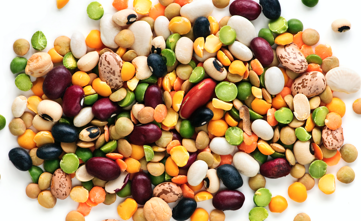
The anticipated intake is a pivotal aspect in the safety assessment of novel foods or food ingredients. The methodology to translate individual food consumption data into life-long intake estimates is complex, constantly evolving, and needs to accommodate the dynamics of dietary trends.
Until recently, EFSA recommended calculating the anticipated intake of novel foods using the Food Additive Intake Model (FAIM), a tool made available by EFSA. Based on the summary statistics of chronic intake data from the EFSA Comprehensive Food Consumption Database, the tool retrieves the minimum and maximum mean intake data from all reporting subjects. It also delivers the minimum and maximum consumption data in the 95th percentile on consuming days per age group and throughout all included food consumption surveys. The output data are provided in graphs and tables that can be exported individually and further processed in Excel or similar programs. The intended uses, i.e. the food categories for which the applicant proposes to use the novel food, follow the rather pragmatic classification system for food additives. However, using these broad categories often results in overly conservative estimates.
In recent years, tremendous progress has been made in expanding the food consumption database (apart from removing the UK data). Moreover, EFSA developed a new digital tool for applicants that is now in line with the FoodEx2 classification system. The Dietary Exposure (DietEx) tool is a versatile tool that can not only calculate the intake of nutrients like vitamins and minerals but also provides more realistic values for the anticipated intake of novel food ingredients.
In contrast to the FAIM tool, summary statistics for the minimum and maximum mean intake and minimum and maximum intake of the 95th percentile are now extracted from all subjects only. Moreover, the output data includes the summary statistics for the intake of the respective enriched food categories provided for consumers only and all subjects. The tool also delivers a table listing the percent contributions of the individual food categories to the overall intake per age group and country or survey. The output is provided as a single Excel-compatible file. In addition, users can modify the entries directly in the tool and save the most recent calculations.
Thanks to the recent digital initiatives at EFSA and the EC, the section ‘proposed uses’ in the administrative data of the electronic submission system ESFC is now aligned with the FoodEx2 classification system, which helps reduce a source of inconsistencies in novel food applications. For further reading, please refer to
• EFSA’s instructions for the DietEx tool
• The FoodEx2 classification system
• The EFSA Comprehensive Food Consumption Database at EFSA
